|
As a new year begins, we look ahead and consider what it may bring. What does that mean to First Nations people? What do Indigenous, Native people hope for when considering the future? Here are some things I feel most American Indian and Indigenous people would agree are the dreams of new beginnings....  A Voice The other night, Leonardo DiCaprio won a Golden Globe for Best Actor for his role in ‘The Revenant’, a film which has a fair amount of First Nations actors. At the end of his acceptance speech, he strongly asserted that it is time the world heard the voice of Indigenous people. I applaud him for making that statement. For centuries, the Native voice has been twisted and misunderstood, forcibly silenced or utterly ignored by mainstream America and the rest of the western world. Humanity needed to hear that voice. It still does. The damage of the silent Indigenous voice can be seen globally, as the world now wrestles with human-inflicted climate change and an epidemic of dangerous religious extremism. The wisdom in the old ways of First Nations peoples is needed now more than ever, and that only comes if the world will listen and hear that voice. Also, if the voice of Native people is truly heard, mainstream society will no longer be able to ignore the continued use of tired, antiquated stereotypes and racially offensive terms and imagery which are in prominent every day use still today. A new voice for Native people requires those outside of our communities to join their voices with ours to affect positive change of all kinds.  New Direction There is a new day rising in Native communities across North America. I see it in my own Lakota community. There is a new generation of young, Indigenous people who are finding a deep strength in the traditions of their culture, and are passionate about ensuring a positive future for not only Native peoples, but for the planet and the world. First Nations communities everywhere are turning back to the traditional foods that once nourished a strong and healthy people. Native communities are looking at alternative energy sources like solar and wind to power the homes of their people. We have always known the way. We have just never had a voice. Part of the reason for that is the perpetuation of false, fantasy type imagery of our people by the mainstream society. How can you hear the voice of a people and take it seriously when all you know of them is a ridiculous stereotype? You cannot. So the new direction for Native people will require a new view of who and what we are (and were) by those outside of our communities. A New Day We can, and we must change. Humanity has no guarantee from the universe that we are to remain. What Indigenous people around the world have always known is that we are part of the web of life. We are not above it. We have always known that what we do to the delicate balance of that web, we do to ourselves. We must return to that balance. We must seek the wisdom of old ways for a new day. Native people have always known the way to a new beginning. Perhaps the time has finally come for the world to listen....
2 Comments
7/24/2015 6 Comments Native Music & Culture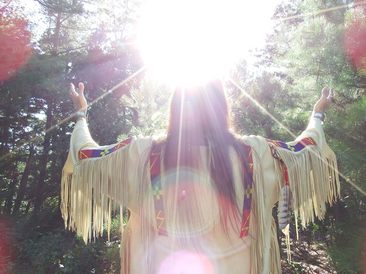 As I sit here tonight in Olympia, Washington, I find myself half way through the west coast leg of my ‘Horse Spirit’ U.S. Tour. Along the way, we have shared time with many wonderful, beautiful souls, and have witnessed the healing power of this new ‘Horse Spirit’ music. The concert experience takes the audience on a deeply moving journey, inviting all to ‘ride back into the wounds’ of the past, and rise up out the other side transformed and healed. 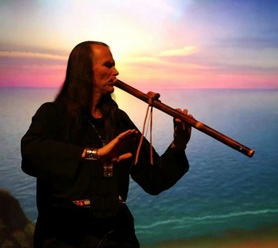 The Native flute itself is an instrument that can and does heal. It is a humble vessel, empty inside, with its ego out of the way, that allows spirit to flow freely through it. It was born of love, and of a broken and then mended heart. That power to mend became another of its uses, which continues to this day. It survived terrible cultural upheaval, and is now experiencing a worldwide renaissance. And why? Because the world is hurting and humanity has lost its connection to the earth, to simplicity, humility and wisdom. The essence of all Native music is its earth connection. Whether it is a Native flute, a hand drum or a powwow drum, the songs Native people bring forth from these instruments are about connection, honor and spirit. 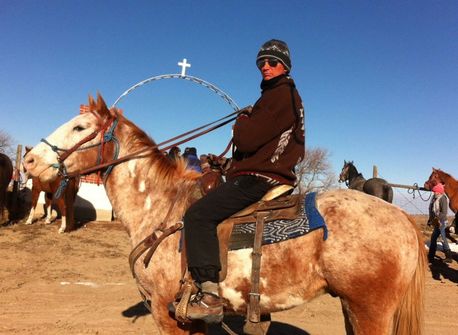 With ‘Horse Spirit’, the music is weaved into a braid with the stories of the Chief Bigfoot Memorial Ride, the history of the massacre at Wounded Knee in 1890, and reflections about how we all must address our wounds in order to truly heal them, and that when we do, we restore our health, our purpose and our happiness. The response to this musical journey has been deeply moving for me. People are resonating with it, finding inspiration and meaning for their lives. What an incredible, humbling honor! Wopila (Great Thanks) to all who have come out to attend my ‘Horse Spirit’ concerts, bought the album, and connected with it’s message. Together, we ride into the shadows, that we may claim the light.... 4/13/2015 5 Comments Tipi TalksEtiquette with Native People And so we broach what can be a sensitive topic with this blog – etiquette – as it pertains to interacting with American Indian people. Right out of the gate we will address one. You notice I said ‘American Indian’, instead of ‘Native American’? Well my friends, that is on purpose. The term ‘Native American’ is a term that was invented by the U.S. Government, and a majority of First Nations people prefer other identifying terms. Having said that, no First Nations person is going to be upset by the term ‘Native American’! To keep things simple, I will use the term ‘Native people’ for this blog. So, what does it mean to exercise etiquette toward Native people? Why is it even necessary? The reason it is necessary is both historical and cultural. Historically, Native people were grossly misunderstood, misrepresented and often characterized in unflattering, inaccurate and even demeaning, insulting ways by the American government, mainstream media and society. A quick peruse through newspaper articles of the past about American Indian issues will plainly illustrate the warped historical view most Americans had of Native people in those times. Those warped views continue today in many ways, some subtle and some more obvious (obvious at least to Native people). The problem with these misconceptions is that they cause injury to Native peoples, injury in the form of racism, teenage suicide (3 times the national average), violence against Native people, alcoholism, epidemic poverty and many other socio-economic issues. This is why it is very necessary to understand and exercise etiquette with Native people.
So, to keep things light and positive, I will focus more on the ‘dos’ than the ‘don’ts’! Here are a few for you:
There are, of course, a lot more ‘dos’ and many ‘don’ts’, but the basic message here boils down to respect. To give someone, anyone, respect, you must see them as an equal. You must see them as human, and not a caricature, a villain, a hero, a mascot or a romanticized fantasy character. To respect a Native person, one must treat them as just that – a person - and not anything more or anything less. We are people. We are human beings; human beings with incredibly diverse human traits, complex cultural traditions and ancient complicated histories. We are not the two dimensional buffalo head nickel, Edward Curtis portrait, sports team mascot cartoon characters much of the mainstream western world has painted us to be. It is necessary to discuss etiquette toward Native people, frankly because it is so often not practiced. So, in summation, etiquette just means to be decent, polite, respectful and gracious. Apply those simple graces to your interactions with Native people as you would any other person, and we may just get to know each other for who we really are! 1/13/2015 6 Comments Tipi Talksoriginal native foods A partial list of the foods originally developed or discovered by Indian people (Most of these foods were Indigenous only to the Americas, meaning they did not grow anywhere else in the world) Corn - all types including sweet, flint & popcorn Beans - almost all types including: Pinto, Lima, Kidney, Navy, Red, White, Black, Green (String, Pole, French, Snap), Butter, Great Northern and Wax Squash - all types including Zucchini, Acorn, Spaghetti, Crook-neck, Summer, Winter and Butternut Tomato - all types including Red, Yellow and Orange, from cherry to melon size Potato - 250 varieties grown (20 varieties are 75% of total harvest) 3,000 varieties were developed by the Incas Cacao (Cocoa & Chocolate come from this) Peppers - all types including Green, Chili and Banana Herbal Tea Sunflowers (the seeds and oil as well),
1/12/2015 8 Comments Tipi TalksIndigenous food today 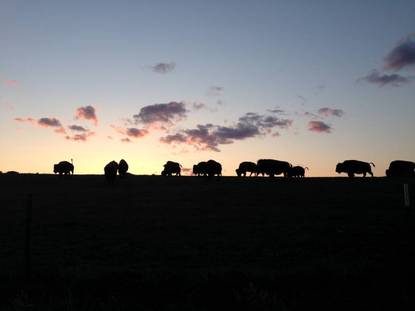 Restoring Our Future by Reclaiming Our Past And so here we are, 150+ years after the ancient, healthy diet of American Indian people was so forcefully and drastically altered, causing a litany of health problems leading to the lowest life expectancy in the U.S. (statistics on Lakota life expectancy: 48 for males, 52 for females). And yet, as I said at the end of my last blog, that is not the end of the story! We are still here. We have survived. And now there is a new focus and purpose spreading across Indian country. Indigenous Nations across North America are rising up and reclaiming their culture, their traditions, their rights and their sovereignty. With this reawakening, Native people are beginning to also reclaim their food heritage. In Lakota country, there is an organization called the Lakota Lands Recovery Project, which is working to restore tribal lands to the Lakota families they were allotted to. As part of this effort, the project is also focused on educating our communities about how to locate their lands and identify the options and procedures for recovering, protecting, utilizing and managing those lands. Another great facet to the Lakota Lands Recovery Project is that they are supporting the restoration of the traditional ecology, economy and culture surrounding the buffalo. Nothing could be more important to Lakota people than the reestablishment of our deep connection to tatanka. An example of that vision for the future of our Lakota diet is Tanka Bar, a company located on the Pine Ridge reservation. Tanka Bar applies the ancient Lakota traditional food customs of combining buffalo meat with fruit, while making their products marketable and easily consumable for today’s world. 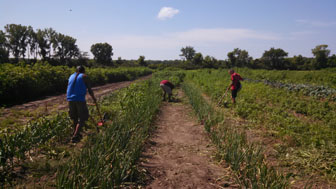 Another great example of American Indian people reclaiming their food heritage is the local food system being built and implemented by the Sac and Fox tribe of the Mississippi/Meskwaki Nation. Through its ‘Meskwaki Food Sovereignty Initiative’, they have developed an organic farm called ‘Red Earth Gardens’, a 40 acre farm consisting of fruits, vegetables, herbs, flowers and cover crops, as well as a 1.5 acre community garden, cooperative incubator space, and hay and conservation habitat. The Initiative aims to restore the tribal community connection to Mother Earth and their rich, organic, healthy indigenous food heritage. 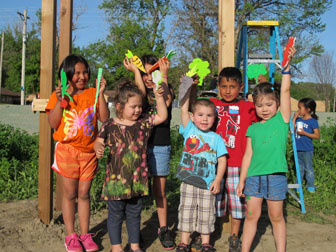 A school garden, tended by the students, provides produce for the school cafeteria salad bar. Not surprisingly, the students love the salad bar! The yield from Red Earth Gardens is sold through Tribal Supported Agriculture shares, a farm stand at the Meskwaki Trading Post, the Toledo Farmers Market, the casino, grocery stores and restaurants, thus providing economic resources for the Meskwaki Nation. Stories like these are the buzz of the times across Indian country. Everywhere, American Indian communities are reclaiming their right to eat the way their ancestors knew so well. It is way of wisdom…. a way of acquiring, respecting and honoring our food, so that we may be the strong and healthy people we once were. A new day is dawning for the Indigenous Nations of North America; a new era of sovereignty, self determination and self reliance. Our cultures were devastated in every way imaginable. And yet, we remain. And so we reclaim all that makes us who we are, including how we eat. Thus the Indigenous food of our future is tied to the Indigenous food of our past. Together they make a sacred bundle, reconnecting us to our history with a vision for our future. 1/10/2015 0 Comments indigenous food - a brief history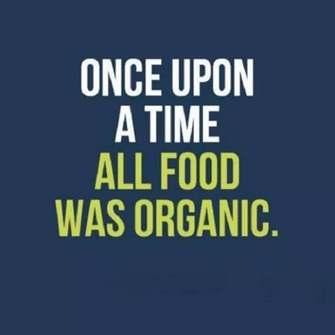 Did you know that over 62% of the food that people around the world enjoy today was originally introduced by the indigenous people of the Americas? That’s right; everything from tomatoes to pecans to popcorn to potato chips was given to the rest of the world by the Native people of North and South America. So where did all this agriculture begin? Let me take you back…. In ancient times, tens of thousands of years ago, the indigenous people of these lands acquired their food by picking the fruits of nature’s yield where they could be found, fishing, or hunting for small or large game. And yet, Native people were way ahead of the curve when it came to developing agriculture, and the preservation and domestication of food. For example, American Indian people invented raised bed gardening over 4,000 years ago, irrigation techniques over 10,000 years ago, and terraced farming over 3,700 years ago. Here I’d like to share a couple personal stories of American Indian food customs that date back thousands of years…. My good friend, the late E. Donald Two Rivers, once told me of a wild rice gathering tradition among his people, the Ojibwe (Chippewa). They go out into the marshes in a canoe that has had its inner floor thoroughly cleaned. They bring two sticks with them. With one stick, they gently bend the wild rice shoot toward the boat. With the other stick, they strike the shoot. Any wild rice pods that are ripe will fall into the bottom of the boat, and any that are not, stay on the shoot to keep growing. They do this all day long, and at the end of the day, the bottom of the boat is full with wild rice! In my culture (Lakota), we have a traditional food called wasna (wash-nah), which is a blend of dried tatanka (bison) meat and fruit. Wasna was used as sustenance by our ancestors when they were on travels, hunts or journeys which took them away from the community for any length of time. It was packed with energy giving nutrients, and was a staple for our people for countless centuries. We still eat wasna today. It was given to all of us on several occasions during the Chief Big Foot Memorial Ride. I consider wasna a ‘big medicine’ food, because it gives your body and your spirit strength and energy. So we have been at this food making, developing, cultivating and innovating for tens of thousands of years. Food related health problems like heart disease or diabetes among our people were unheard of. We were a strong, healthy, and robust people with a closeness to the earth, and therefore, to our food. We respected it, honored it, and valued it greatly. Our American Indian ancestors viewed their food with reverence, and treated it as such, understanding that if what you eat is healthy and strong, you will be too…. 1/4/2015 4 Comments New Year's Resolutions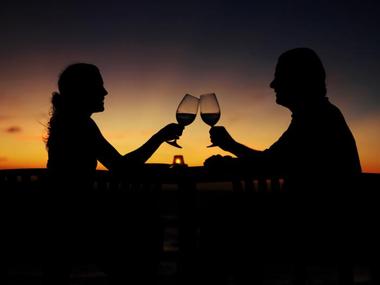 New Year's resolutions.... People make them - and break them - every year. For the most part, they are not taken too seriously. Having said that, I want to offer another perspective on what all this 'resolution' stuff is. At it's center, a New Year's resolution is really about positive change. We want to better ourselves. To be better people, to take better care, and to do better things. And what better time to make a commitment to change than at the turn of a new year, right? So, at the heart, a New Year's resolution is a beautiful thing. So why don't we keep them? We mean well when we make them. We intend to make those changes. Right? Well, first off, change is always a challenge. It is never easy. We are creatures of habit, and old habits can be hard to break. Secondly, a New Year's resolution is hardly a plan, but more of a spur of the moment hail mary! So, a resolution is a good thing. Do you really want to keep it? Then make a plan. Write it down. Strategize it. Figure out the specifics of how you are going to make that positive change you really want. Get serious about it. Do the things necessary to make the change a reality. A New Year's resolution, in order to be adhered to, needs to be a bit more of a ceremony. You can do it! Whatever your resolution may be, it just takes real dedication. Give yourself enough time, allow yourself a slip now and then, and ask for help. All habits, good or bad, have an underlying function. Figure out what that underlying function is, and you will unlock the secret to changing it. So.... welcome to 2015! Welcome to another season; another season of hope, aspirations and possibilities. Reach for your purpose, your vision for your life. Make those resolutions, for they are the dreams of your higher self. May 2015 bring you closer to those dreams, as you seek the path to a better you, and a better world.... ~ John Two-Hawks 1/1/2015 21 Comments The giveawayHau kola na mitakuyepi (Hello all my friends and relatives)!
WELCOME!! Isn't this new site cool?!! We have been exploring and researching and designing and building for many months behind the scenes, preparing and readying this new, modernized, mobile/laptop/PC responsive website.... all for you! The new day has finally come, and I welcome you all to 2015 and my brand-new website, and my new blog 'Tipi Talks'! We are running a 'Giveaway Drawing' starting today, so I wanted to elaborate a bit on the deeper meaning of the giveaway from a Lakota / Native American perspective.... The Giveaway The custom of the giveaway goes way back in our culture. Many American Indian nations have... 12/28/2014 17 Comments Of earth and sky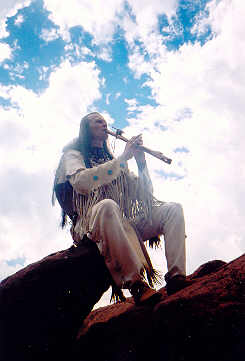 The old ones know this truth – no two spirit roads are the same. It is not our place to see the way for others, only to see the way for ourselves. There is great wisdom in the understanding that each of us has a personal walk with Spirit. And that walk is indeed, personal. It is unique for each of us. And yet, we are not alone in our journey. We have each other to share with, and to learn from. For if we only see the world from our own perspective and close out all others, we will become narrow and shallow in our thinking and in our spirit. We will lose our connection to the greater good, and the oneness that exists in us all. This doesn’t mean we will always understand the view from the eyes of another. In fact, many times we won’t! What it does mean is that we have a responsibility to open our hearts and our ears and listen, that we may strengthen our humility through learning, and grow our wisdom through exploring the unknown. It is in that spirit that I share with you now…. In the Lakota way of life, we honor the seven directions of the Sacred Hoop. The seven directions are: 1. The East, 2. The South, 3 The West, 4. The North, 5. Mother/Grandmother Earth, 6. Father Sky, and 7. The Center. There are more details to each of these; I have kept to the basics to keep this discussion simple. These seven sacred winds are the sacred points on the spiritual journey of the good red road of life. They teach us how to live in each phase, how to look back and learn, how to look forward and seek, how to look down and grow, and how to look up and reach. There is an irony in the seven directions of the sacred hoop that I want to share with you. It is this: You cannot fully grasp the 7th direction until you experience the other 6. And yet, you cannot fully fathom all the lessons of the other 6 directions until you understand the 7th! Seems a bit like a dog chasing its tail doesn’t it? This is what it means to touch the spirit with your feet on the ground.... We walk on this earth. Our feet, our bodies and our rhythms are connected to the ground. We must remember this when we reach for the sky. For if, in that reaching, we lose our grounding, our sense of who and what we are, we will find ourselves adrift, rolling about in the spiritual ether like tumbleweed, with no root and of no use to anyone. We will bounce about from this to that, from here to there, unable to make deep connections and learn deep truths. We will tumble along with every strong wind that blows, chasing the swirling dust only to find that it vanishes like an apparition before us when we try to catch it. And so we must return to the earth. We must plant ourselves in its truth. We must seek not the quick and fleeting fanfare of a passing cloud, but rather commit to the long wait of deep roots and profound wisdom found only in the ground of our sacred path; the quiet, unassuming trail of respect, honor, humility and sacrifice. And so it is that we can really only touch the spirit and connect to its great power if we are planted with firm roots in the soil of humility, balance and love. Such is the way of the sacred hoop. We can only touch the 7th direction if we are planted in the other 6. |
CategoryAll Native Life Tipi Talks Wisdom For Life AuthorJohn Two-Hawks - Grammy nominated Native American Flute Music Recording Artist, author, activist and speaker. FULL BIO Archives
|

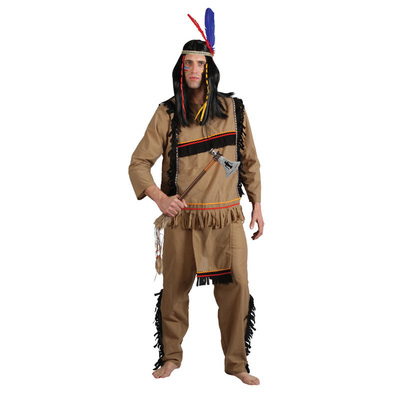
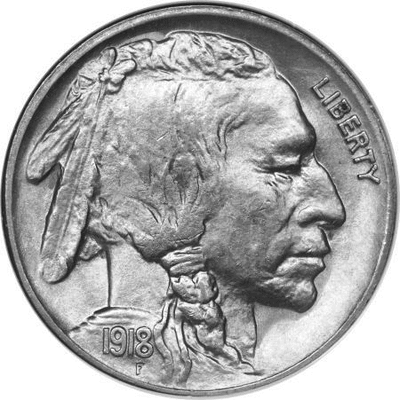
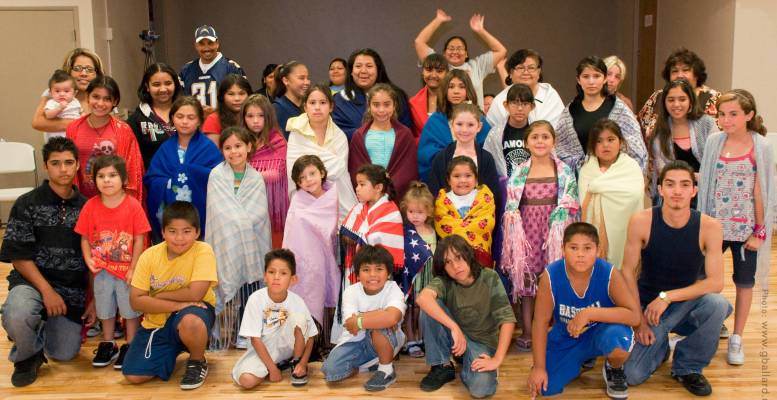
 RSS Feed
RSS Feed
